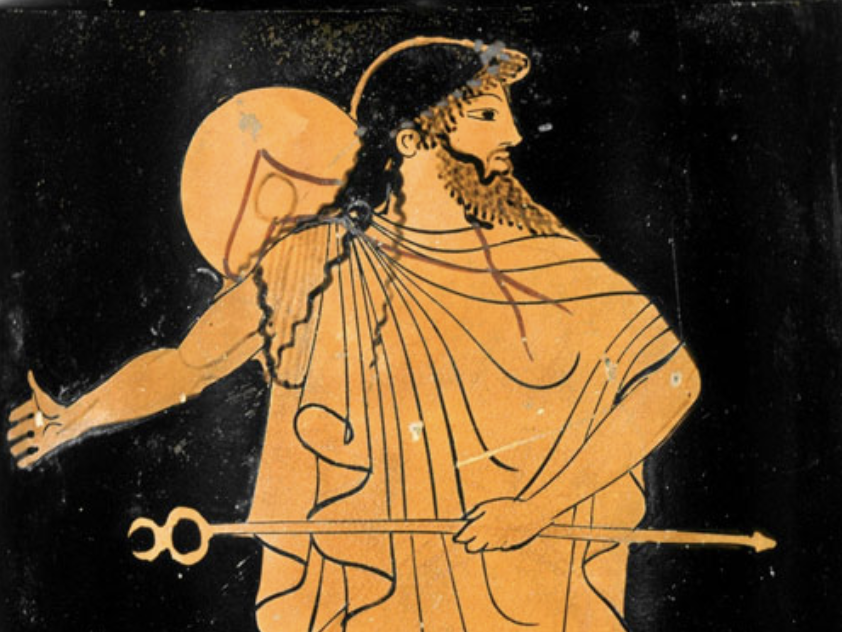IG VII 530
-TANAGRA- Phorystas, the son of Triax: herald
Date:
mid 3rd century BC
Edition:
εἰκόνα τήνδε ἀνέθηκε Φορύστας
παῖς ὁ Τρίακος κῆρυξ νικήσας καλὸν
ἀγῶνα Διός· ἄλλους τε ἀθλοφόρους
πτανοῖς ποσὶν εἷλον ἀγῶνας,
εὐόλβου δὲ πάτρας ἄστυ καλὸν στεφανοῖ.
vacat
Καφισίας ἐπόεισε.
Translations (en):
“Phorystas the herald, the son of Triax, who won the beautiful ἀγών of Zeus, dedicated this statue. I won with winged feet (πτανοῖς ποσὶν) also other contests, bearers of awards, and the beautiful rock of the happy homeland crowns me.
Kaphisias did it.”
Translations (it):
“Questa statua dedicò Phorystas, figlio di Triax, araldo che vinse il bell’agone di Zeus. Mi aggiudicai con i piedi alati anche altri agoni latori di premi, e mi incorona la bella rocca della patria felice.
Kaphisias fece.”
Commentary (en):
The epigram accompanying the statue of Phorystas herald from Tanagra poses two matters: the city inferred under the expression “the beautiful ἀγών of Zeus” and the value of πτανοῖς ποσίν (l. 4).
The beautiful image of the winged feet could allude to the long road traveled in search of fame and glory or recall Hermes in his role of herald. Already Kaibel and then Moretti had considered remarkably suggestive and not at all negligible the parallel with the epigram of the famous Kleosthenes, the ἱπποτρόφος victor (in the 516 BC = Olympiad 66; Paus. 6. 10. 7) at the competition of Olympia, defined as καλὸν ἀγῶνα Διός. If the context were indeed this, the epigram for the herald of Tanagra would add one more tessera to the scarce documentation on the competitions of heralds and trumpeters at Olympia, which were included in the agonistic program in 396 BC (= Olympiad 96), when Krates and Timaios from Elea also won their first victory.
Commentary (it):
L’epigramma che accompagnava la statua di questo araldo da Tanagra pone due interrogativi: a quale città si riferisca “il bell’agone di Zeus” e quale significato si celi dietro l’espressione πτανοῖς ποσίν. La bella immagine dei piedi alati potrebbe alludere alla lunga strada percorsa in cerca di fama e gloria, o richiamare Hermes nel suo ruolo di araldo, oppure alludere alla specialità atletica della corsa, che potrebbe addirsi alla prestanza fisica degli araldi. Già Kaibel e poi Moretti avevano considerato notevolmente suggestivo ed affatto trascurabile il richiamo all’epigramma del famoso Cleostene, ἱπποτρόφος vincitore (nel 516 a.C. = Olimpiade 66; Paus. 6. 10. 7) al concorso di Olimpia, definito proprio καλὸν ἀγῶνα Διός. Se il contesto fosse davvero questo, l’epigramma per l’araldo di Tanagra si andrebbe ad aggiungere alla scarsa documentazione sui concorsi di araldi e trombettieri di Olimpia, che furono inseriti nel programma agonale nel 396 a.C. (= Olimpiade 96), quando anche Krates e Timaios elei riportarono la prima vittoria.


